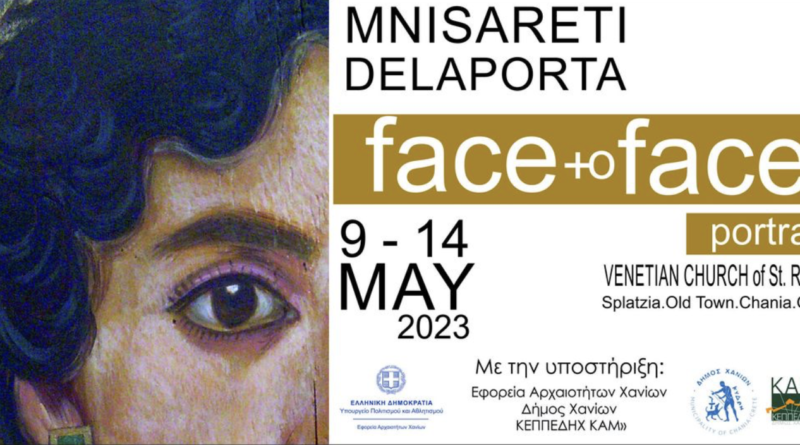Fayum Portraits: art exhibition “Face to Face” – Chania 9th – 14th May
Mummy portraits or Fayum portraits are the most astonishing paintings from the ancient world, they are remarkable for their social importance and for their quality as art.
WHEN: 9th until 14th May
Opening hours: 11.00 – 14.00 and 16.00 – 22.00
WHERE: Venetian Church of Saint Rocco, Splantzia, Old Town, Chania
The Fayum portraits got their name when they were discovered by archaeologists in the necropolis of the Fayoum region of Egypt. They were funeral portraits that were placed on the mummy instead of the face. Painted onto wood or linen.
Fayum ( Arab الفيوم, Al Fayyum),85 km from Cairo, is the name of a city, as well as the oasis, also called the Garden of Egypt because of its vegetation. It was a rich valley like an oasis in the silence of the endless desert. In the centre of the valley there was Lake Morida resembling a natural basin. When the waters receded, the people living in the higher points of the valley cultivated the fertile land. Towns were built on the sides of the hills and the people used to bury their dead nearby.
It is no surprise that we are all so attracted to the Fayoum portraits, wonderful naturalistic portraits – in these portraits three major cultures of antiquity meet, Ancient Greece, Rome and Egypt.
The portraits covered the faces of bodies that were mummified for burial. Extant examples indicate that they were mounted into the bands of cloth that were used to wrap the bodies. Almost all have now been detached from the mummies.
They usually depict a single person, showing the head, or head and upper chest, viewed frontally. In terms of artistic tradition, the images clearly derive more from Greco-Romanartistic traditions than Egyptian ones.
The Fayoum portraits are an example of the great Greek painting tradition.
Greek mercenaries who had fought in the army of Alexander the Great and the first Ptolemaian kings settled in the Fayoum basin. There they were allocated land for agricultural use after the local Lake Mourida was dried up and the family members married indigenous Egyptians adopting Egyptian beliefs on the afterlife and corresponding burial customs which included mummification. The Fayoum basin turned into a fertile area, full of gardens, orchards and vineyards. Egyptians from different parts of the country came to work on the large farms of the area, resulting in the formation of a population directory, about 30% of which were Greeks, or more correctly, the descendants of the first Greek-speaking colonies.
These people, who represented the local aristocracy, had the financial means to order portraits from the painters and pay for their expensive mummification. In fact, despite the fact that after the Roman conquest of Egypt the Romans treated them as Egyptians, it seems that they themselves continued to consider themselves Greeks and presented themselves as Greeks to the Roman authorities which granted them enough self-government privileges and tax cuts. Their choice to portray themselves in a Greek painting way is obviously linked to their desire not to lose their identity. These people are pictured in the portraits we admire today, dating back to the middle of the 1st century A.D. to the 3rd century A.D.
Sources: chania-culture.gr and Φύλακασ Μουσείων και Αρχαιολογικών Χώρων



